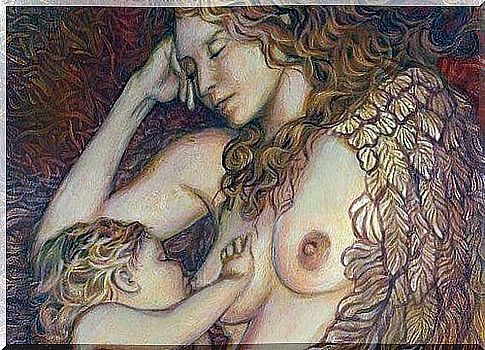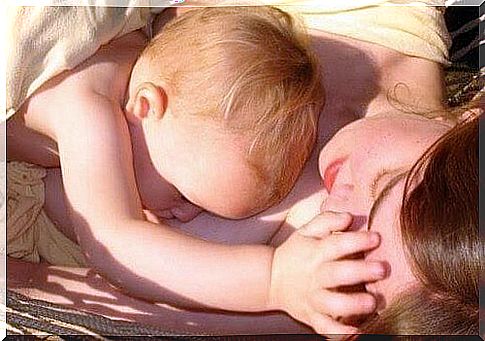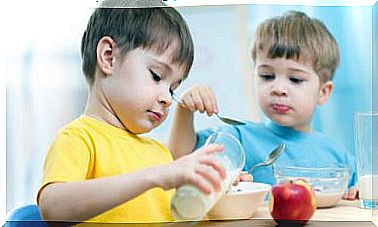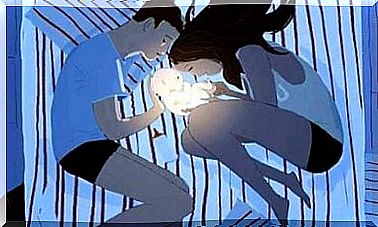Breastfeeding And Its Calming Effect

Breastfeeding is defined as an analgesic for the calming function that the mother’s breast has on the child, for the fact that it helps to calm the baby. In the experience of some health care professionals, a mother’s breast is the best calming agent when it comes time to vaccinate or treat the baby.
For several years, the time of giving a child a vaccine was a potentially heartbreaking time. It was terrible to hear the little ones cry more out of fear than pain. It was difficult to make the moment less painful and traumatic. But some specialists believed that as babies, children’s brains were unable to perceive or process pain. Which is not true.
Yet, a brilliant solution is being put in place today. In fact , breastfeeding can help relieve pain in babies, even to the point of not feeling it. In fact, breastfeeding for analgesic purposes is based on the physiology of pain, elaborated by means of various studies.
How does breastfeeding for analgesic purposes work?

That the little one is unable to feel pain is false. Recent studies have revealed that their brains are mature enough to process associated stimuli. The tears are real, their fear and their restlessness are well founded. For this reason, sensory breastfeeding is considered a method of pain relief in the newborn.
According to a WHO report, this method comforts and gives emotional relief, for several reasons. This is not a magical solution, but it works, as it focuses on an important process for the newborn. He may be crying, but he won’t feel desperate, because he’ll be in the safest position for him.
At the same time, latching on to the breast already gives him relief. At that moment he will be quenching his thirst and a primal instinct. It is believed that mother and child disconnect during breastfeeding; there is even talk of the mother’s clouded brain. That is to say that while the mother gives the breast to the baby, her brain goes into a kind of dozing state that prevents it from processing information as usual.
Something like this happens in the newborn, perhaps even more intensely. While attached to the breast, the baby is completely focused on this function. Sucking produces endorphins, which in turn produce a feeling of well-being. We can try to distract him, but he’s sure to keep his focus. Plus, he is able to relax enough to take a nap in the meantime.

Breast milk also has an analgesic function. It contains lactose, which stimulates the production and release of substances that produce relief. Glucose was once given to children for its calming effect.
Breastfeeding and alternative modalities
As expected, this solution cannot be applied in all cases. The moment in which a blood sample is taken, therapies or vaccines are given to babies, they are not always ideal for proceeding with breastfeeding. However, the WHO has developed a series of recommendations based on this principle.
In this regard, experts describe a variant known as “mother’s analgesia”. This process is nothing more than the name given to that universal process applied to calm the infant: the womb.
The mother’s arms seem to offer immediate relief, which is why they are an alternative in similar cases. If breastfeeding is not possible – because we are not breastfeeding or because there are no favorable conditions – the following recommendations may be helpful:
- It is recommended that the mother, guardian or person the child trusts be present before, during and after the vaccine or treatment is given. Under no circumstances is it recommended to mislead him or leave him alone with the medical staff.
- If the baby is normally breastfeeding, but at that time it is not possible, it is recommended to do it before or after the injection.
- In babies who are not breastfeeding, the analgesic function of the womb is an effective alternative method. Or, you may want to distract him with toys or a cell phone.
The mother’s breast not only nourishes the newborn, but also gives it warmth, affection and connects it to the mother. Without a doubt, when the baby is breastfed, he receives all the protection and care he needs, which goes far beyond mere feeding. This method promotes a bond that can remove fears and pains, so it is widely approved and considered.









